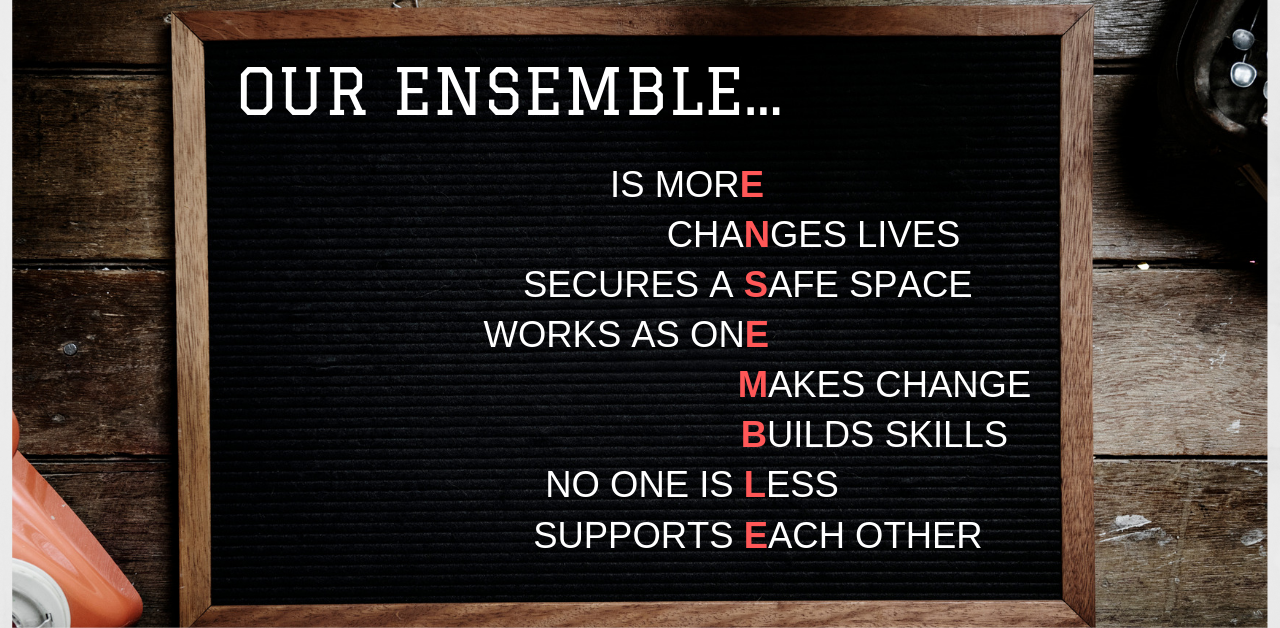There exists in everyone the potential for good or evil. Laramie Dean's adaptation of Dracula asks the question: How much would it take to bring out the darkness inside of you?
Ensemble: Is it time to dismantle the pyramid?
Many productions are based on a pyramid structure : Stars at the top, supporting cast in the middle, chorus at the bottom. Even though there are more actors involved at the bottom of the pyramid, it’s those at the top who usually get to shine.
This structure has been in place for years and is inherent in every genre of play from Shakespeare to Broadway musicals. Stars shine, the chorus gets stuck at the bottom. And because high schools often produce Shakespeare to Broadway musicals, the pyramid structure finds it’s way into student productions. There’s nothing worse than being at the bottom of the pyramid and feeling like you’re not a worthy part of a show.
If you’re intent on the performance aspect of shows, you probably accept the pyramid structure because that’s the way theatre works. You can’t produce The Wizard of Oz without Dorothy. But if you’re intent on the drama in education aspect of theatre in your program, and if you ever want students to work together on something of their own, the pyramid structure has to be dismantled. Everyone in a show has to participate in and actively buy into the notion of ensemble.
To be a part of ensemble is not to be part of a chorus – the acting ensemble is the entire cast. To be part of an ensemble is to create a feeling where everyone belongs. The ensemble is a space where everyone is on the same page. It’s an atmosphere where everyone on stage works toward the same goal.
How do you create ensemble?
There are three qualities you want to instill in your cast when creating an ensemble.
- To Look and Listen: The ensemble actor always has their eyes and ears open while on stage. They are engaged at all times.
- To Support: Since they are looking and listening, the ensemble actor is ready when the unexpected happens to their fellow actor. They don’t just stare into space waiting for their next cue.
- To be a Community: Ensemble actors work together, they build a community out of their production. There is no star system.
To create an ensemble, you want your students engaged, supporting each other, and thinking that everyone is equal in the process. These qualities are within every student but they don’t happen naturally. You have to lead by example and incorporate ensemble building exercises into your class or rehearsal process as soon as possible.
Manhole Cover
Use this exercise at the beginning of every rehearsal. How well do they work together by the time your show is ready to open?
- Students stand in a circle. Their first job is to make a perfect circle.
- At their feet is a manhole cover, which is the area and dimension of the entire circle. A very big manhole cover.
- The task is to pick up the manhole cover as a group and lift it to shoulder height and then bring it back down to the floor.
- All the principles of mime apply – the weight, shape and size of the cover must be taken into consideration. Everyone must work together to keep the shape consistent.
- Next do the exercise with something that has the same shape but an entirely different weight and consistency. Cotton candy circle? Jello circle?
- As students continue to perfect the exercise, have them do it without any verbal cues. Can they work together to lift the manhole cover without talking?
Related Articles
The Student Director's Handbook
by Lindsay Price
Help students take their show from first audition to opening night with The Student Director’s Handbook. This easy-to-use ebook is full of guidelines, tips and templates designed to help students create a vision, circumvent problems and organize rehearsals on their way to a successful production.
The Rehearsal Companion
by Kerry Hishon
You’ve chosen the play, paid the royalties, done the script analysis, held your auditions, and cast the show. Tomorrow is the first rehearsal. Are you ready? Really ready? The Rehearsal Companion can help!





